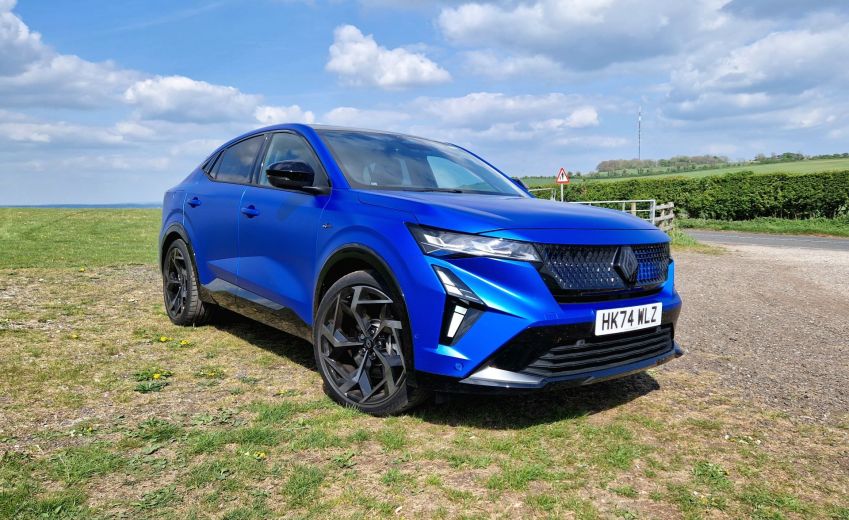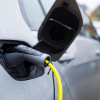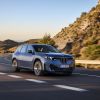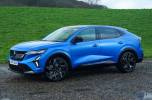Renault Rafale Long Term Report 4: How much Alpine is in our Rafale?
Key details
Spec: Renault Rafale E-Tech plug-in hybrid 300 atelier Alpine | Price: from £49,965 (£51,665 as tested) | Mileage: 6270 | Test MPG: 94.2 | Report date: 29th August 2025
Our Rafale has been spending most of its time either plodding up and down the M4 to and from the RAC’s Bristol office, or pottering about town in EV mode of late.
That, combined with a few much longer journeys without opportunity to charge, has seen our average fuel economy figure drop below the magic 100mpg mark.
It's still more than twice what we'd see if we didn't charge the Rafale both at home and at the office when time allows, though it proves the official 565mpg figure isn't exactly attainable unless your commute is quite a bit shorter than mine.
With all this motorway cruising and about-town bimbling, it's easy to forget that our Rafale is meant to be Renault's semi-sporting flagship model.
Admittedly, a near two-tonne, plug-in hybrid SUV is a world away from the little rockets that Renaultsport used to turn out. But this ‘atlier Alpine’ model claims some influence from the Alpine sports car division.
iop.jpg)
So how does it stack up compared with the real thing? We recently spent a week with Alpine’s latest model, the A290 electric hatchback, and found some interesting comparisons between the unlikely pair. Not least how the Alpine Vision Blue paintwork makes this A290 GTS look like our Rafale’s svelte, scrappy sidekick.
The first thing of note was the turning circle, which is about the same between the two models despite the Rafale’s much larger size and bigger wheels. You can thank the Rafale’s excellent four-wheel steering for that. It took some getting used to at first, but now I’m dialled in to the way it kicks in through a bend I can enjoy how it makes a big family SUV feel remarkably agile - and easy to park.
Speaking of steering, I actually found the A290’s rack a bit too light compared to the Rafale’s meatier weighting. But, of course, in all other handling respects the ‘true’ Alpine is the much more engaging, enjoyable car on all roads, without sacrificing too much in terms of comfort.
The A290 has a more natural-feeling brake pedal, too, but the Rafale doesn’t feel like a complete barge back-to-back with its smaller cousin, with decent body control and loads of grip.
That grip is a key reason why the Renault can keep up with the little Alpine in a straight line, with both cars managing a respectable 0-62mph time of 6.4 seconds. The Renault has the slightly better power-to-weight ratio too, surprisingly.
On paper stats are one thing, though, and it’s the Alpine that feels more urgent off-the-line. The Rafale is quick once at full chat, but unless you’re in Sport mode and keep the engine running you’ll have to wait for the electric motor, engine and gearbox to synchronise before it really takes off.
Overall, the atelier Alpine additions to the Rafale are most welcome. That includes plenty of exterior visual punch from the matte paint (which has drawn plenty of compliments from passers-by in our time with it) and the intricate 21in alloys.
We also love the backlit Alpine logo on the seatbacks, among other neat details. Oh, and one more point: the A290 might look bigger than you'd expect alongside the Renault, but the former can barely sit medium-sized adults in the rear in any comfort. The Rafale, meanwhile, is palatial even for six-footers.
lk.jpg)
On a more minor observation, our only proper niggle with the Rafale over the past few months has been its column-mounted drive selector.
Quick direction changes aren’t easy – in a three-point turn you’ll often think you’ve selected drive or reverse, but you end up awkwardly lurching in the wrong direction because the selector wants to be held down for longer to select the desired gear. You also need to strongly press the brake pedal to switch direction, otherwise it won't do so. One of these days that might catch us out in an unpleasant way…
Renault Rafale PHEV long-term test report 3: fit for the French President?
Key details
Spec: Renault Rafale E-Tech plug-in hybrid 300 atelier Alpine | Price: from £49,965 (£51,665 as tested) | Mileage: 5329 | Test MPG: 104.1 | Report date: 25th July 2025
The official car of a country’s leader might not seem like a nation’s biggest priority, but it’s a big deal if you’re a home-grown carmaker.
Take the President of France’s wheels as an example. Citroen, Peugeot and Renault have long been battling it out to win the affection of the latest incumbent, and presidents throughout the years have had their favoured brands.
That’s partly why these brands have continued to turn out posh executive models, even though few had much commercial success. Current President Emmanuel Macron has recently taken delivery of Renault’s latest flagship – the Rafale PHEV – which we also happen to be running.
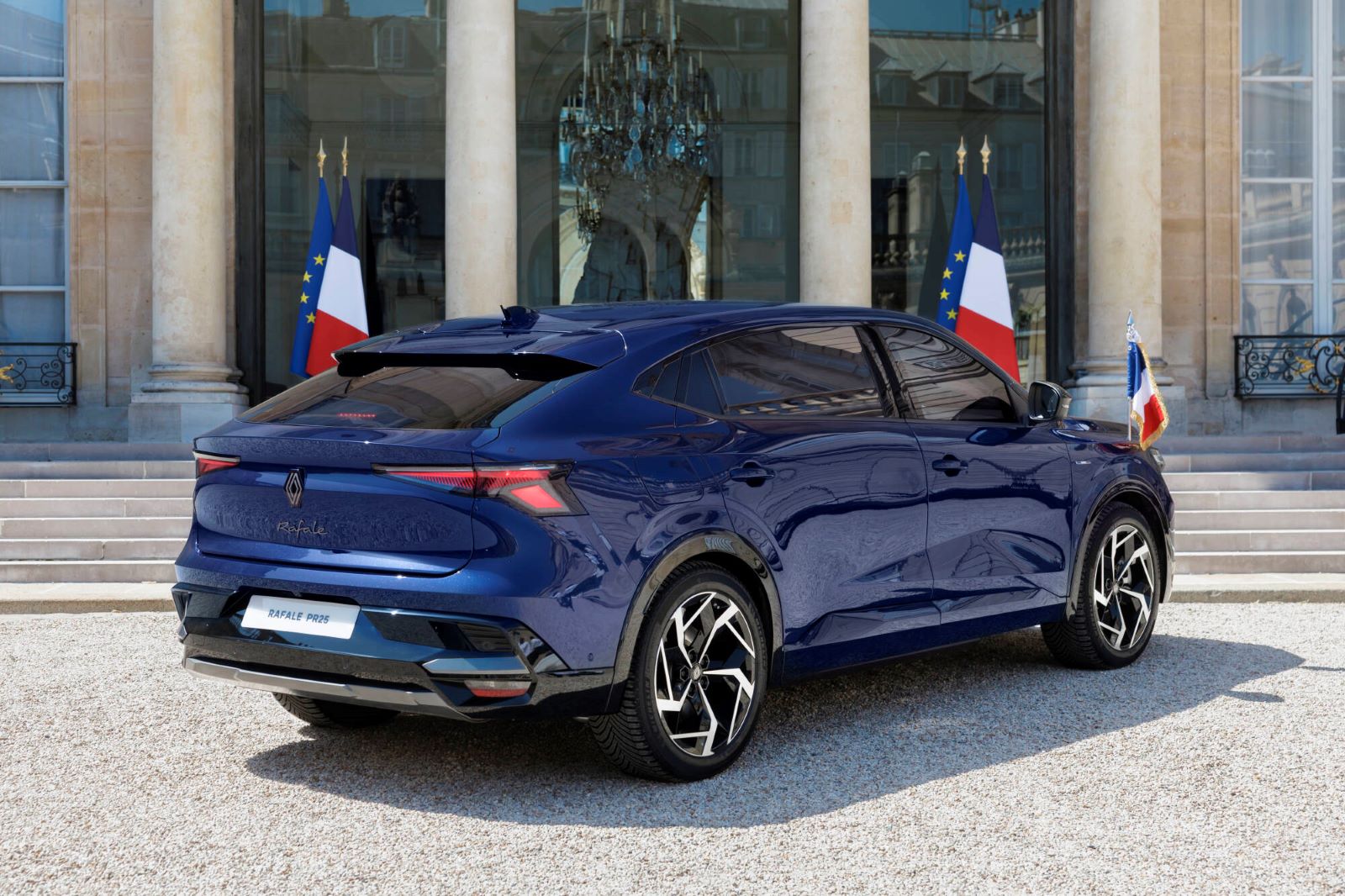
But this is no ordinary Rafale. Created in collaboration with the Elysée Palace and various French craftspeople, the armoured and extended-wheelbase presidential Rafale gets a lot more than some flag holders on the wings. The French flag is embedded into the grille design, for example, and there’s also an exclusive paint colour with a Tricolore glitter effect. The paint is designed to limit heat absorption to keep the cabin cool at all times.
Inside is what’s described as an “office on wheels”. The full interior is under wraps for security purposes, but it features Pyrenees marble cladding, special seats with engraved French coats of arms and a host of bespoke bits from the finest artisans France can provide.
Of course, our Rafale gets none of these trinkets. But bar some suspension tweaks, the basic car underneath is no different. So, since we’ve piled nearly 3,500 miles on Renault’s finest so far, is worthy of transporting a head of state?
Well, there’s certainly room in the back to stretch out even without the Presidential model’s 130mm of extra length – a generously proportioned kind or three medium-sized adults will be fine. It’s much roomier than something like a Cupra Formentor – as it should be given the Rafale is over 4.7 metres long.
Headroom is plentiful given its coupe design, too, while Renault’s chunky ‘Ingenious armrest’ with its padded storage area, cupholders that transform into tablet holders and two USB-C ports. That means no fewer than four USB-Cs for rear occupants alone – even the busiest member of the ruling elite can keep their devices charged.
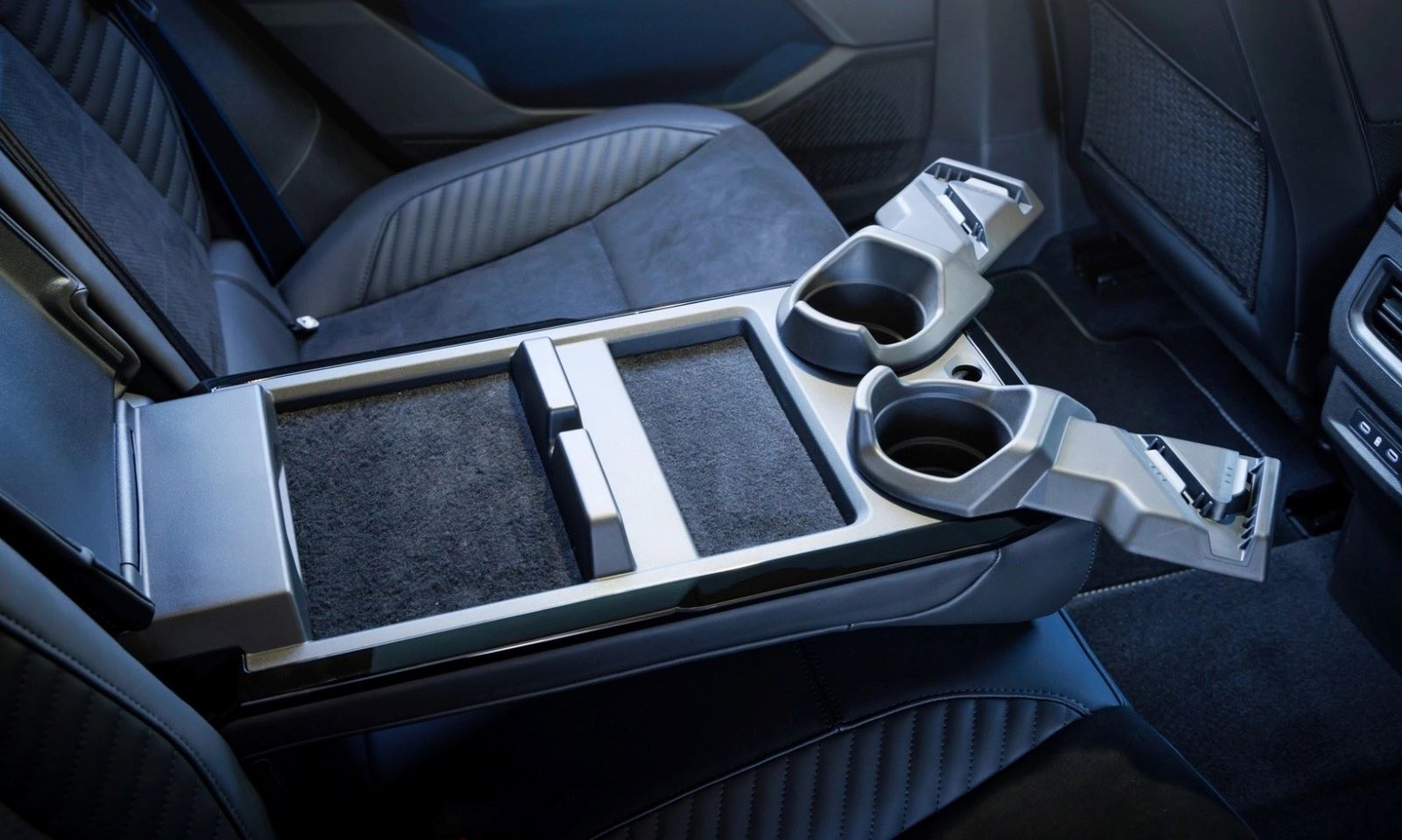
Our plug-in hybrid (Renault now calls it a ‘Hyper Hybrid’) loses the adjustable boot floor of the regular hybrid – a shame as the underfloor space is an ideal place to store top secret files. Still, the boot’s capacity is larger than a Volkswagen Tiguan eHybrid, and we’ve never found it wanting for space.
Our Rafale has had no squeaks or rattles in its time with us, and the cabin feels suitably upmarket with plenty of soft-touch trim and Alcantara seat inserts. Details like the Tricolore door and seat stitching on our Atelier Alpine trim give a patriotic vibe, too, and the 1930s C.460 Rafale racing aircraft etched into the rear of the panoramic roof is another detail that Macron will likely enjoy.
We’re sure he appreciates the smoothness of the power delivery in EV mode, too, although we can understand the choice to drop down to 20-inch wheels over our car’s 21″s to improve the slightly lumpy ride. The agility of the four-wheel steering (more on that in a later report) is perfect for a speedy motorcade out of Paris, too. The right choice for the French president? Overall, we’d say so.
Renault Rafale PHEV long term report 2: plug-in hybrid charging and range
Key details
Spec: Renault Rafale E-Tech plug-in hybrid 300 atelier Alpine | Price: from £49,965 (£51,665 as tested) | Mileage: 3958 | Test MPG: 113.2 | Report date: 23rd June 2025
Plug-in hybrid cars bring a whole new array of complexity and mental arithmetic over petrol, ‘self-charging’ hybrid and fully electric alternatives – and the Renault Rafale PHEV is no different.
How long will it travel on its battery before the petrol engine kicks in? When, where and how long do I need to charge it? Should I even charge it at all, or is it more cost effective to run the engine than use public charging?
After nearly 2000 miles at the wheel of the Rafale, from regular commuting to UK holidays, we feel educated enough to answer all these queries in two questions:
How long is the EV range in the Renault Rafale PHEV?
There are many variables here, but we’ve seen anything from 40 to 55 miles of real-world range of the Rafale’s 22kWh battery pack so far – competitive for a big, higher-powered PHEV.
The lower figure is a worst-case scenario, running at 70mph on our Bristol to Newbury M4 motorway commute in rainy and blustery conditions. 45 to 50 miles is achieved in clear Spring weather, while we’ve been able to beat that on slower roads and with town use allowing regenerative braking to replenish some lost energy.
That’s a little down on the official 65-mile range figure, but it’s worth noting that we’ve never needed to ‘fully’ charge the Rafale’s battery – it always leaves around 8% charge in reserve even when the range calculator is at zero, meaning anything up to 20kW of charge will brim it back up.
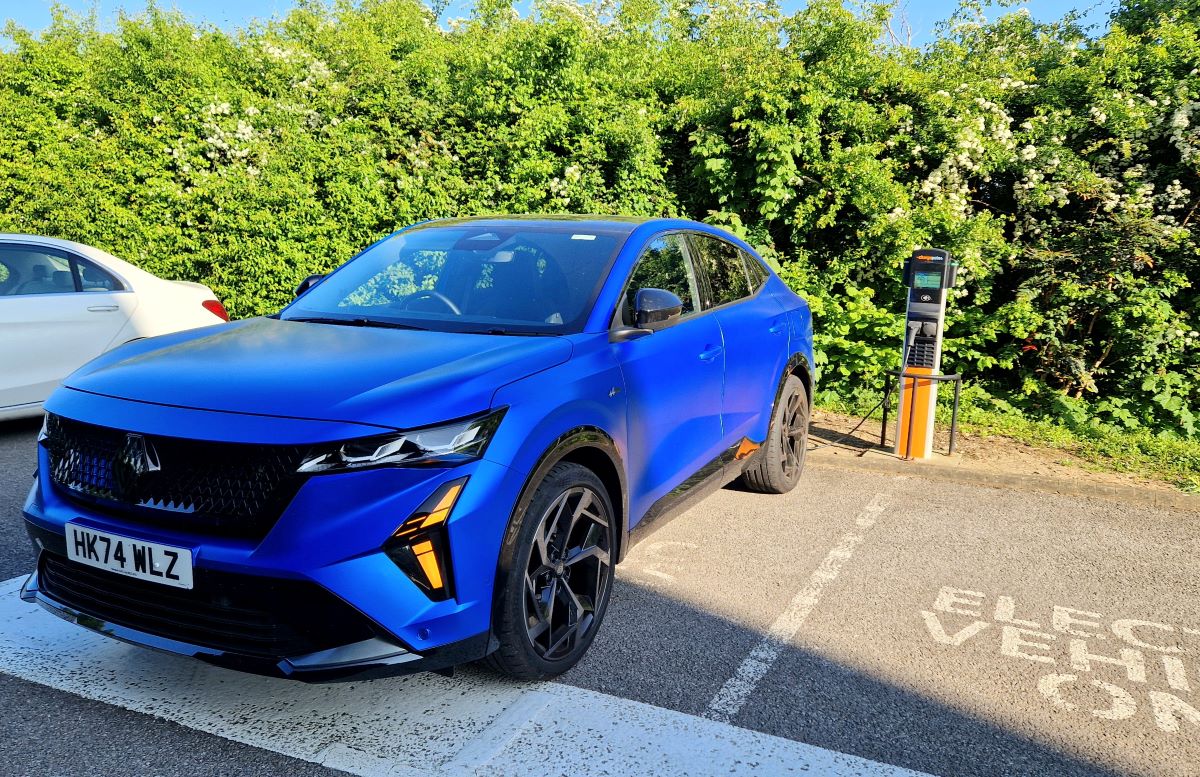
Why is that? Well, the ‘full hybrid’ element of the Rafale’s PHEV’s powertrain is the same as the cheaper, 200hp non plug-in version.
It runs the engine independently of the wheels at specific RPMs to act as a generator, quickly topping up the battery before allowing a few miles of electric-only running. This reserve enables that – and the Rafale always reverses in electric power too.
What does charging a plug-in hybrid cost in the UK?
In our experience and with this particular model, you’re far better off not using most of the public charging network to charge a PHEV.
This is simply down to EV public charging costs. Leading charging app ZapMap estimates the average cost of ‘slow’ AC public chargers at 52p per kWh – more than double a standard fixed-rate home electricity tariff.
Do the sums based on a 50-mile range from the Rafale and you’ll get 28.43 MPGe: in simple terms, charging at that average price and running in electric mode is more expensive than running a BMW M4 Competition on its official fuel economy figure. Yes, really.
Given the Rafale will manage around 45mpg unplugged and using the petrol engine, we’ve only charged away from home and work on a couple of occasions: once when lucky enough to get access to a free charger when visiting Waddesdon Manor in Aylesbury, and another when a generous East Sussex AirBnB owner let us fill up for nothing on holiday.
Things make more sense when commuting. I currently have to charge the Rafale using its domestic three-pin plug cable via my parents' garage down the road from my flat, while the workplace chargers at the RAC’s office are a much more reasonable 30p per kWh – and the MyRenault smartphone app lets you easily keep tabs on charging.
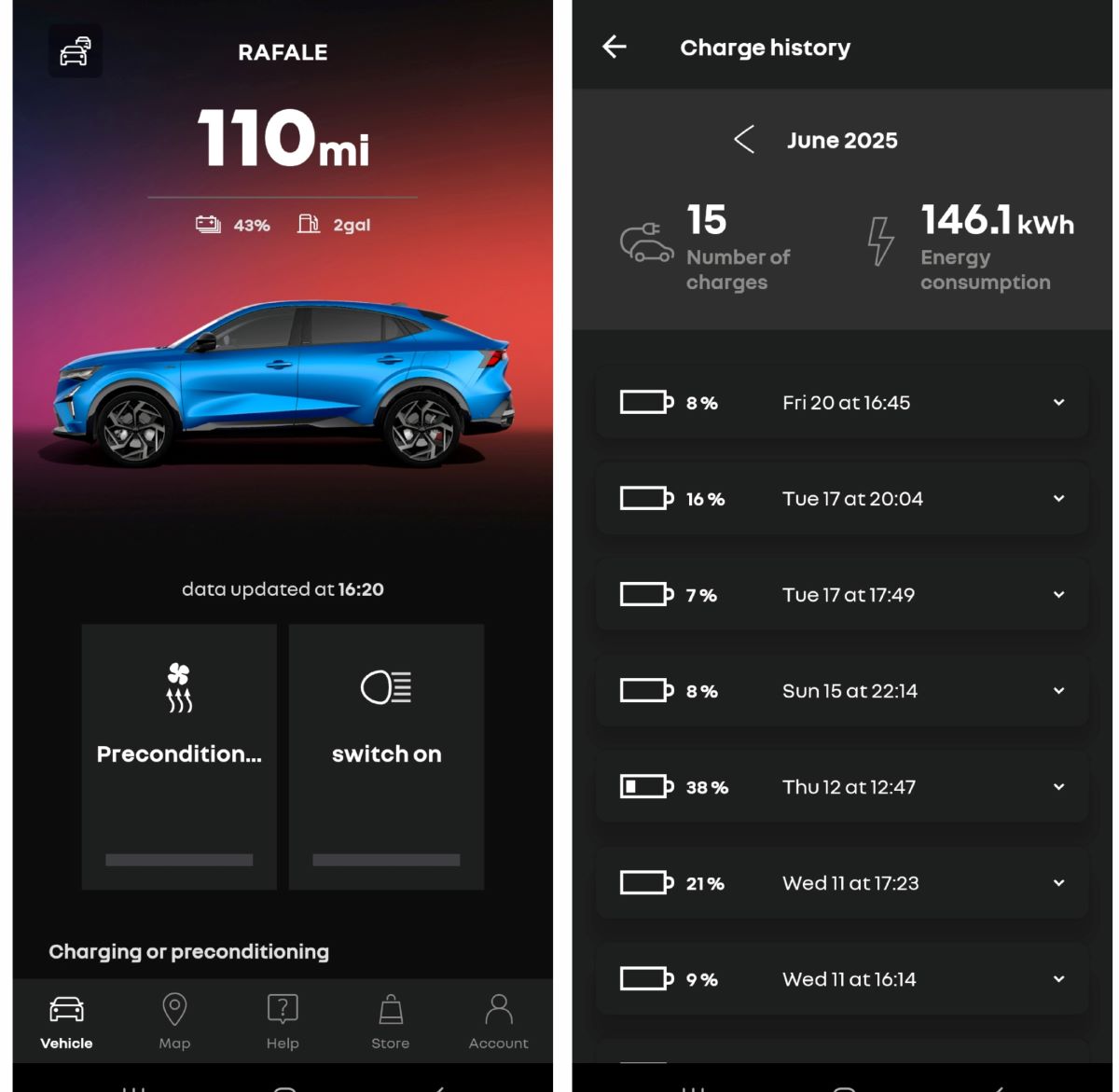
Combine this with my parents’ regular energy price cap tariff and running the Renault on EV-mode our Rafale manages the equivalent of 53.4mpg, based on current petrol prices via RAC Fuel Watch. That’s good by the standards of 300hp, four-wheel drive large SUVs, but really you want your own driveway and a home wallbox for this plug-in hybrid to make sense.
That’s where companies such as Octopus Energy come in. Their off-peak smart tariff gives you an electricity rate of just 7p per kWh overnight, and charging the Rafale PHEV this way gives you a wallet-pleasing fuel economy equivalent of 210 miles per gallon. Nice.
All of this is ignoring the positive environment impact of driving without a petrol engine engaged. It also ignores that the Rafale is much nicer to drive with charge in the battery – much smoother and quieter, primarily because the engine can sometimes becomes vocal when running at its optimum battery charging revs.
But our example proves that – for private car buyers at least – getting the best out of a plug-in hybrid can mean firing up a calculator more than you think.
Renault Rafale PHEV long term report 1: living with a French Flagship
Key details
Spec: Renault Rafale E-Tech plug-in hybrid 300 atelier Alpine | Price: from £49,965 (£51,665 as tested) | Mileage: 2,059 (at start of test) | Test MPG: 169.5 | Report date: 20th May 2025
Flagship, large cars from French carmakers have often been rather unusual, left-field options. Many were cars you’d only choose over the mainstream (typically German) competition if you were determined to be different.
Cast your mind back to the quirky Citroen CX, XM and C6 models – cars that didn’t exactly fly out of showrooms back in the day but now have a significant enthusiast following. Peugeot has had a few, too, but Renault’s back catalogue of big posh models is larger.
It all kicked off with the Renault 25, progressing through models like the unloved Safrane, the bizarre, tall ‘executive hatchback’ Vel Satis and the even weirder Avantime. Renault’s last effort was the Latitude, a forgettable saloon not sold in the UK that went out of production nearly a decade ago.
But the big, range-topping Renault is back in the form of this: the Rafale. And this is the range-topper of the range-topper: the bells-and-whistles ‘atelier Alpine’ model with the 300hp E-Tech plug-in hybrid powertrain – including a 22kWh battery and promised range of up to 65 miles. We’ll be running it for the next six months to see if that all delivers in the real world.
The Rafale adopts the increasingly popular coupe-SUV bodystyle instead of trying to create its own niche, like the old Avantime. It’s the sixth SUV in Renault’s UK lineup alone (seventh if you count the recently departed Arkana) but it’s by some distance the largest in the range.
It’s also the most luxurious, particularly in this atelier Alpine trim. As the name suggests, it’s been worked on by Alpine engineers, with standard-fit ‘4Control’ four-wheel steering, uprated tyres and (unique to this spec) adaptive suspension that uses a camera to read the road ahead and decide whether to soften or firm up the ride.
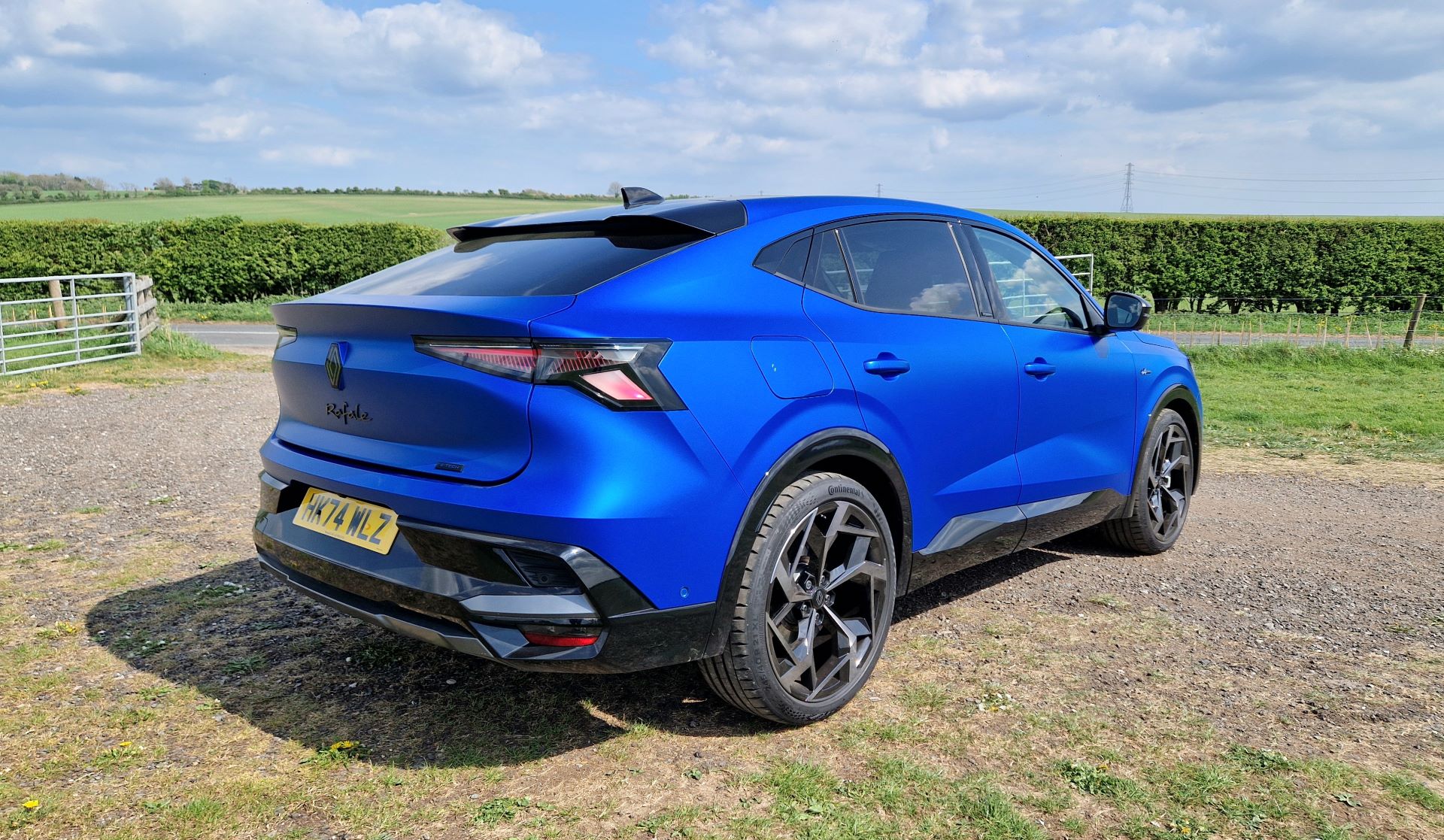
That’s alongside a massive tally of standard equipment, including heated seats, a heated steering wheel, matrix LED headlights, a 12-speaker Harmon Kardon sound system, Renault’s ‘Solarbay’ opacifying panoramic glass roof, a gesture controlled electric tailgate and sports seats with neat backlit Alpine logos on them. Ventilated seats for the incoming summer aside, I don't want for anything else.
Our car also gets striking matte ‘Summit Blue’ paintwork, adding an extra £1,700 and pushing the price well over £51,000. That’s a lot for a Renault in theory, but not necessarily too much for a fully-loaded, 300hp, four-wheel drive SUV with premium intent. For reference, a top-rung V6 Renault Vel Satis in 2002 was the equivalent of over £57,000 today.
In more modern terms it’s pretty much exactly what you’ll pay for the slightly smaller Cupra Terramar PHEV First Edition, which is similarly kitted out but comes with a less powerful, front-wheel drive powertrain. It’s also nearly £15k less than the cheapest Mercedes-Benz GLC 300 e – and Renault’s lease deals on the Rafale are extremely keen at the time of writing, too.
Those all-important initial impressions are good. I’ve never been sold on the whole coupe-SUV genre (personally I think it’s home to some of the ugliest new cars money can buy) but the Rafale is at least smartly proportioned. It also benefits from that stand-out paint and the 21-inch ‘Chicane’ alloys – the best wheels offered on the Rafale, in my opinion.
The Rafale also uses its considerable size effectively by being very roomy inside. Renault’s latest interiors are arguably its best yet, too, There’s no shortage of tech to play with, but the dash layout is intuitive, while I’ve enjoyed the combination of comfort, agility and strong fuel economy during my first commutes in the car (more on that in future reports).
So, is this a compelling flagship offering a taste of luxury for a lower price than premium brands? Or a confusing curio that isn’t worth the extra over Renault’s Austral family SUV? We’ll pile on the miles and hope to discover that over the next six months.

RAC sale – up to 33% off*
• Roadside cover from £5.29 a month†
• We get to most breakdowns in 60 mins or less
• Our patrols fix 4/5 breakdowns on the spot


